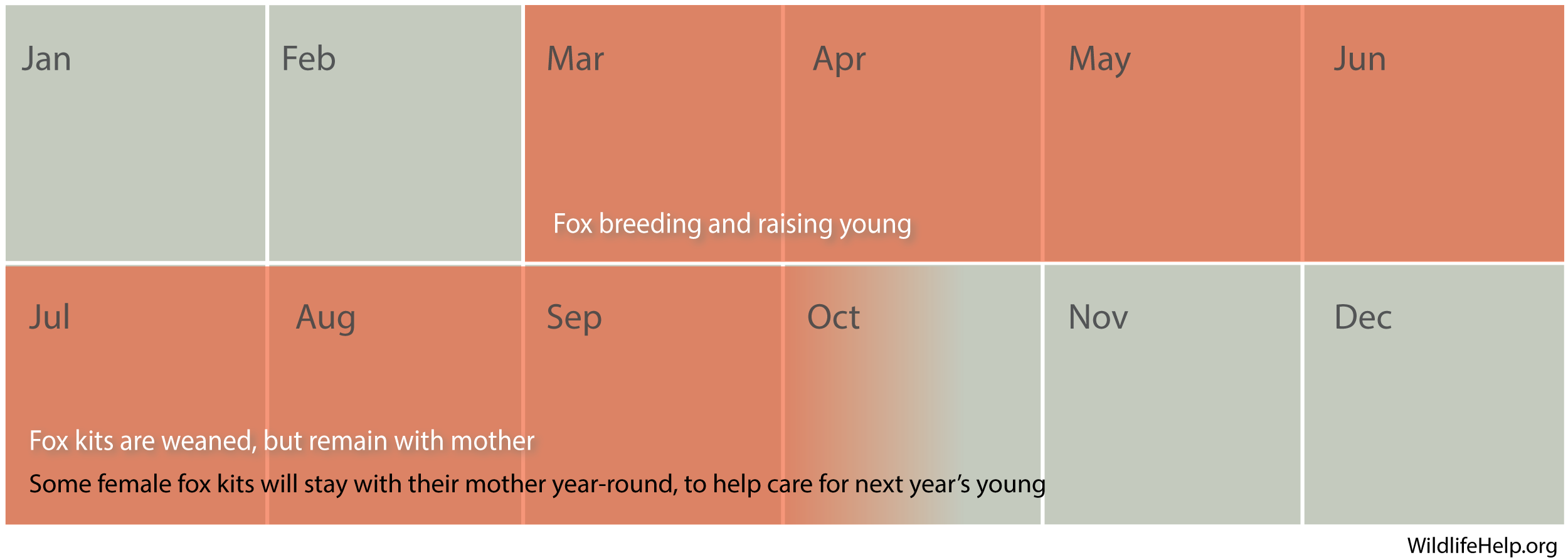Fox
Red and gray foxes are both found in most areas of North America. Foxes are a member of the canine (dog) family, with a long, pointed muzzle, large pointed ears, and a bushy tail.
Red foxes typically are light orange-red in color with black legs, a light-colored underbody, and a white-tipped tail. They prefer open woodlots interspersed with farmlands.
Gray foxes are primarily a salt-and-pepper gray above with yellow-tan underfur and a black-tipped tail. They have retractable claws which makes them adept tree climbers, and they prefer heavier cover such as dense hardwood or mixed wood forests, swamps, and areas along rivers and streams.
Both red and gray foxes are largely crepuscular meaning active during dawn and dusk hours, but are also nocturnal. However, it is not uncommon to see either species foraging during the day, especially during the breeding season.
Foxes den in burrows, wood piles, rocky outcrops, hollow trees, and brush piles, as well as under sheds and decks. They tend to be opportunistic feeders, consuming small mammals, rabbits, birds, eggs, insects, fruit, and poultry. They may pursue easy food sources such as unsecured chicken coops, pet rabbits or guinea pigs, outdoor pet food, and garbage.
The breeding season for foxes varies by region. Mating typically occurs between December and February, with pups born in March and April and an average litter size of 3 to 6 pups. They are weaned after 12 weeks. Parents often move young to new dens every few weeks to protect them from predators.
Consider breeding season when planning animal damage control activity in order to avoid orphaning young.
Foxes adapt to urban and suburban areas. They are afraid of humans and will typically avoid them unless habituated or sick. Do not feed foxes or try to ‘domesticate’ them. This can increase aggressive behavior, which in turn can lead to small pets or children being bitten.
It is not common for foxes to pursue full-grown cats and dogs, but they may perceive kittens or small puppies as prey. Always supervise pets in a fenced yard or keep them on a leash when possible. Keep cats indoors — especially young kittens — to avoid confrontations.
In rare cases, foxes may carry rabies. If you or your pet is bitten by a fox, call your doctor, veterinarian, or local Health Department immediately.
Foxes can carry mange — a skin disease caused by parasitic mites. Mange is communicable to other animals and people, but not without close contact. If you suspect your dog has been in close contact with a fox and is showing signs of hair loss and peeling skin, call your veterinarian for further advice.
Legal, Regulated Trapping in Massachusetts
Legal, Regulated Trapping in Massachusetts
The use of legal, regulated, trapping by licensed trappers can be useful for reducing local wildlife populations and can help reduce nuisance problems in Massachusetts.
Legal, Regulated Hunting in Massachusetts
Legal, Regulated Hunting in Massachusetts
The use of legal, regulated, hunting by licensed hunters can be useful for reducing local wildlife populations and can help reduce nuisance problems in Massachusetts. You can allow hunters on to your property, provide a place for them to park to access nearby forest, and/or give them permission to hunt within 500 feet of your residence. Please also keep in mind that each town may have additional by-laws that restrict hunting and the discharge of firearms.
Solutions for fox problems
Laws and regulations to be aware of
Regulations for Massachusetts
|
||||||
While we attempt to provide guidance about state and federal regulations pertaining to specific species and control techniques, we do not provide information about local jurisdictions (city, town, county, etc.) where regulations may be more restrictive, especially as it applies to discharge of firearms, transport of animals or use of trapping equipment. Contact your local city or county government to inquire further. No guarantee is made that information (or lack of information) associated with a species or control technique is completely accurate or current. You should become familiar with federal, state and local laws before beginning any wildlife control activities. |






